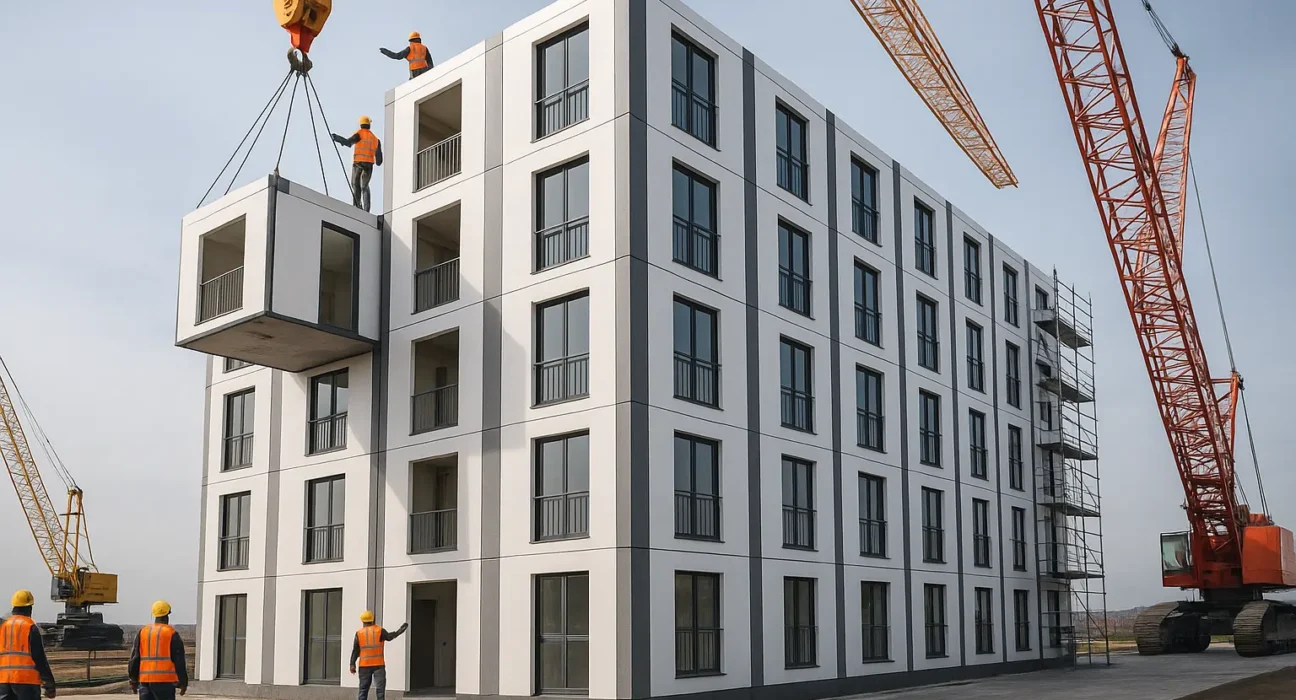China Builds 10-Storey Apartment in Just 28 Hours: A New Era of Fast, Smart Construction

A global record has been set by China in this new world of engineering in building an apartment building of 10 stories without taking 28 hours. The structure is complete and up to running smoothly, free of danger, and ready to be used – a thing that is shocking architects, builders, and city planners all over the world.
The new credo in fast building is a demonstration of what the combination of technology, teamwork, and innovation can do to address one of the world’s increasingly common woes. need for low cost, speed efficient and sustainable housing.
Modular Construction: The Secret Behind the Speed
It is a modern construction technique, called modular building, that is the secret of this incredible achievement. differential from the old techniques where everything is developed at-site within weeks or months in this case, the pre-fabricated units are developed in factories in advance.
Each module; with walls, plumbing, the electrical systems and even windows is then shipped to the construction site. Cranes and a crew of workers – technically trained – erects these pieces like a high-tech puzzle, delivering an exceedingly sturdy structure in the snap of a finger.
This technique is not only safe, but also highly effective, and cost effective and in the case of its latest project the 10-storey apartment will be able to rise in less than a day for the China.
A Technological Marvel with Global Implications
The point that defines this achievement is not the speed, but the accuracy and quality of the finished building. Each unit went through painstaking design and trial before arrival at the site, minimizing human mistakes and inclement conditions to slow work.
Due to the extremely fast increase in population of the cities of the world, there is more pressure in place for prompt solutions for housing. China’s example proves that one can do buildings faster without compromising safety and quality.
Experts believe this will transform urban housing, particularly in such countries as those of South Asia, Africa, and even parts of the Middle East where land burden and migration trends are straining housing systems.
Benefits Beyond Speed
Constructing a 10 storey apartment in 28 hours sounds like a stunt – but much more. The advantages of modular construction are greater than that of speed:
• Cost-Effective: Factory manufacture minimizes labor costs and losses on materials.
• Environmentally Friendly: Low waste and pollution as compared to traditional building.
• High Quality Control: Under certain conditions, components are tested.
• Scalability: Buildings can be tall or wide when more modules are added.
• Less Disruption: Fewer neighbours’ noise and annoyance is what quicker builds promise.
Modular building provides for governments and private developers a strong solution to climate change, material costs, and urban overcrowding.
Careful Planning, Perfect Execution
To pull off such a record didn’t take a night. Chinese engineers and builders spent weeks planning and designing and testing every detail. Nothing was left to chance from the position of power sockets, to the stress load of beams.
The team of builders worked at a round-the-clock time, also in shifts with automated tools, high-precision cranes and advanced logistic system. The final result: a liveable, safe and completely connected building done in the time it takes to spend a typical weekend.
How This Could Change Housing Around the World
The construction techniques used in China may guide other countries in overcoming housing inadequacies, post-disaster rebuilding, or refugee settlements. For example:
• After a natural disaster, it is possible to assemble houses in a short period of days rather than over months.
• It would be possible in developing nations to establish entire communities at a low cost.
• In crowded cities, prefabricated housing could help close the gap for affordable living spaces.
In addition, this approach makes it possible to integrate data systems and infrastructure before buildings are delivered to the site in smart city development.
Challenges and Future Outlook
Needless to say, modular construction presents several obstacles. This method calls for sophisticated logistics, large upfront capital expenditure, and a labor force trained in a recent technique. In order to use this approach, countries need to reform their building regulations and set up factories for modular manufacture.
The results from China’s rapid build project have demonstrated how considerable the returns on investment can be. The wider the availability of these techniques, the more the costs are anticipated to fall, thereby increasing appeal to government and development sectors.
Public and Expert Reaction
Coverage of the 10-storey construction shared widely on social media and news outlets prompted engineers, architects, and urban planners to offer praise. Some said it looked like a glimpse into the future, while others made the LEGO block analogy but stressed that it was safer and more innovative.
People responded online with a combination of amazement and curiosity. People in many different countries wondered about this. “Is it possible to use these designs for housing wherever we live?” Most experts agree that with suitable infrastructure and dedication, construction of similar structures is certainly feasible.
Conclusion: Building the Future, Today
China has achieved more than construction—it has created hope for how we build homes in the future. It stands as more than a simply title-worthy achievement that the 10-storey apartment was built in just 28 hours. it reflects the achievements of technological thinking and motivation.
Because the world demands faster, more sustainable, and more intelligent methods to accommodate expanding cities, modular housing could guide the way forward. One might regard this project as the inception of how urban dwellings will be built in the future.









